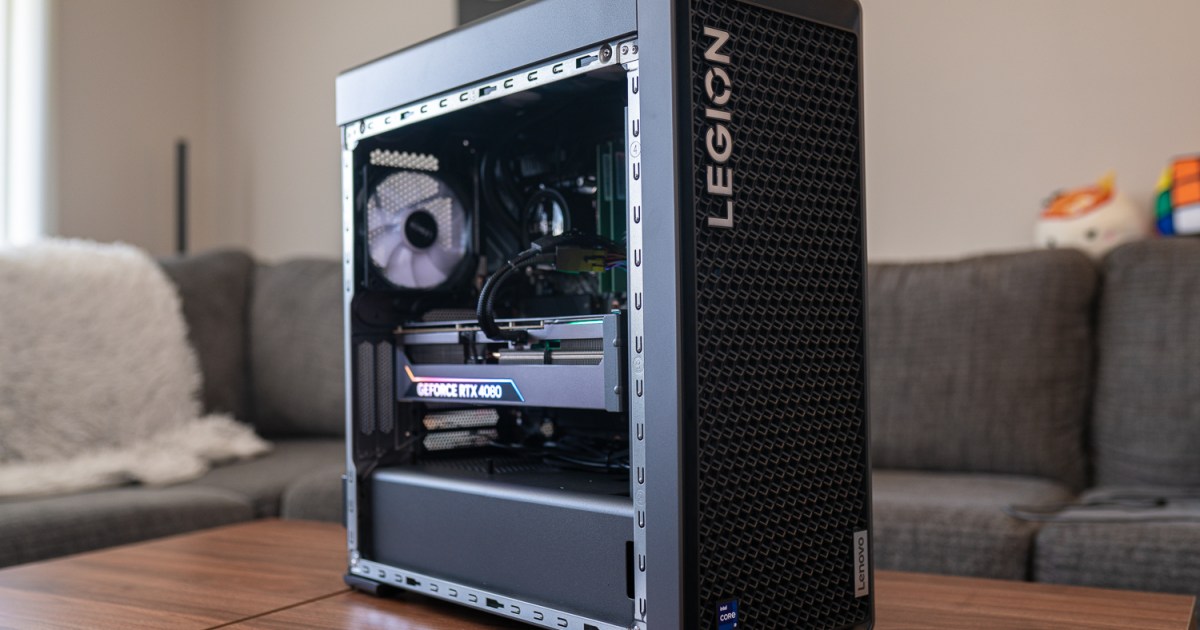[ad_1]
Koby Avital is a strategic advisor at enterprise software development company NearForm and a board member of the Linux Foundation – he has served as EVP of Technology Platforms for Walmart, and acted in technology leadership roles for FitBit, Priceline.com, and Paypal. I sat down with him to understand how to deliver on digital transformation goals, based on his ten years’ experience in this field.
What do you see as the central problem with digital transformation?
Most large companies have huge budgets and thousands of engineers working on digital and organizational transformation. In the last ten years, I have spent most of my time working on making these transformations successful. I have watched organizations try to deliver on it, but fail to satisfy the business and make the transition in their first attempt.
With digital transformation, many organizations look out at the promised land in front of them but have serious obstacles to get there. Why? Because it is not just a tech play; it is about culture, people, focus, and constant tradeoffs around what ‘good enough’ means. When CTOs and CIOs attempt to transform their tech ecosystem, they find this is most likely the most complex initiative of their professional career.
As they look to shift their on-premise/private instances to the cloud, the transformation outcome is pretty much a lateral move of their tech stack and applications with, hopefully, some improvements for a better path to the future once they arrive in a cloud-based state.
The trouble is, to do that, they find the need to allocate the company’s best people to do the job, which means taking them out of their day-to-day sustaining role of supporting the business. As these people help make the shift, they’re not working on the business functions, and the outcome is some level of business stagnation and unhappiness.
As a consequence, technology is not enabling the business fast enough. A transformation could take two or three years, even when you just perform lift and shift with the necessary native cloud adjustments. There’s always the lingering question: where is that money coming from?
Companies moving to the cloud cannot wipe the table and start from square one. Just because everyone says to do it, that doesn’t make it right. Leaders try to do this but don’t know how, so they go to the big consultancy firms and give them the ‘keys to the kingdom’ to do the transformation for them. As good as these may be, they cannot work magic to reach the desired state for the business and, too frequently, get half a job done.
So, what’s the alternative?
These experiences taught me that digital transformation is about business first, then people, then technology. Whatever technology you use, make sure it is right for the business, and innovate on what you already have invested in and not on something you don’t have. I call this “innovation in place”, growing where you have already planted.
Companies have a huge amount of legacy, which runs the business and brings in revenue. You should not ‘throw out the baby with the bathwater’ while attempting to follow a tech dream! The people managing, operating, and maintaining this legacy have invaluable business, tribal, and operational wisdom, so monetizing this (or at least figuring out its worth) is very important before you even consider replacing or augmenting it.
Cloud migration isn’t a silver bullet; it needs to respond to the needs of the business in increments and evolve side by side with what you have. You want to embark on a strategy you can deliver on without wishful thinking or cloud myths. This has become my passion, building a multi-cloud environment in the right way, as an evolution and not a revolution.
Don’t get me wrong. Cloud is an important enabler and provides you with capabilities that are almost impossible to develop. Public cloud provides excellent ‘best of breed’ services for workloads to use and consume, such as services that are difficult and expensive to develop in-house.
However, saying, “We have to move toward microservices, serverless, etc.,” is not always a good idea. The hope is that these technologies will solve the problem, when they won’t. They’re good for specific workloads and models, but are not an answer in themselves. You need to make them work for your organization, not the other way around.
Cloud infrastructure for compute and storage workloads should be considered and dealt with like a utility – like with electricity, I connect to the outlet and can use resources how I want. Doing so (and some abstraction is needed) gives the organization freedom of choice in terms of what cloud to use (including private) and where to use it while optimizing on location, cost and operability.
How does this affect relationships with the cloud providers?
Tech modernization and transformation are expensive and should be seen as a big, hairy, audacious goal – a BHAG. You cannot underestimate or delegate it to a vendor or an external consulting firm with complete confidence, as that can lead to an undesirable outcome.
You cannot deliver transformation in a vacuum; it must be done mostly from within. But as we said, cloud migration is a once-in-a-lifetime event for most of the technical staff who are not trained or experienced, and may have no resources or capacity to experiment with the technologies involved. Key factors beyond tech transformation are people skills and capabilities, and the business appetite to handle the costs of transition.
Cloud providers do a good job offering discounts to cover the ‘double bubble’ of resource utilization during migration/modernization, while running old next to new to validate point solutions or apps. However, this never covers the end-to-end impact on the organization: not least, the opportunity cost due to talent re-allocation to support the transformation, whilst losing focus on business progress.
I did not witness hyperscalers or consultants covering this, less tangible spending. It is a good business, reflected as a common theme that I’ve seen around headquarters of organizations, private and governmental, in the size of vendor and supplier buildings compared to those of the organizations concerned. The optics aren’t good – it appears like they are making more money from the companies than the companies are making for themselves from the cloud transformation.
In previous jobs, when I ran the numbers, I found that a company could execute workloads on a private cloud a lot cheaper. This model becomes particularly cost-effective when you have static workloads with little deviation in the usage pattern. You still need the public cloud for bursting, and to react to unpredictable usage patterns or seasonality. It’s not simply about the cost per unit of processing, but the cost models inherent in the architecture.
Cloud providers design their environments like a parking lot for small cars – a car in and a car out: they are load-balanced and tuned for such a pattern to achieve relatively high resource consumption, because the cars are defined to be the same (think memory management). But what if the new tenants are big organizations that scale in much bigger chunks? What if you drive 18-wheelers? It’s a different model for scale, utilization and cost.
It’s not about deciding one or the other, but getting the best out of both. Architecturally, this means creating an abstraction layer, not only for all the Cloud providers but also for private cloud, legacy systems and edge infrastructure. Each hyperscaler, Google, Microsoft, and AWS, looks like a fort, but with an abstraction layer and the right connectivity, you enable symmetrical deployment across all of them.
My main project at Walmart was to build its modern multi-cloud architecture. When this strategy was presented to the public cloud leaders, they recognized immediately that we were practically commoditizing the public cloud and asked them to continue developing and improving their best-of-breed services for us to use. This changed the nature of our relationship. I said, “Guys, you should develop platforms and services that will dovetail with us, be cross-cloud and support our ecosystem. The multi-cloud is a conglomerate of technologies that must interoperate during dev and runtime. It’s no longer a vendor-customer relationship. If you want us to win, we are in this together.”
How does this apply to other vendors?
This brings us to another principle – there’s no emotion in technology decision-making. Please avoid that. You hear statements like, Oh, we don’t like IBM, we don’t like Mainframe, we don’t like this vendor or that vendor. I say, why?. Does it do the job or not? If it doesn’t, talk to the vendor or try to make it work first. They don’t want to lose you, so bring them into the game. Make it a win-win, or live and let live. CTIOs, please don’t forget that you are always short on time – your priority is to buy time, so you can focus on the right things and work one slice at a time.
So, start building partnership relationships with your vendors, favoring whether they help you get the job done. Strategic vendor relationships are critical to your success, but many companies let an account manager and procurement drive the partnership and its strategy.
At an organization where you spend millions of dollars on vendors, you need to elevate partnerships to the executive level – don’t talk unless you talk to the vendor CxO and build mutual understanding, give and take. Bring them on board to gain from success through more adoption and consumption of their services, and let them feel the pain when it is not working. You are the customer, so look to be dealt with with respect, not a choke hold. The vendor lock-in model is like putting enterprises against the wall, but it can become a successful partnership if they provide you with what you need.
At the start, you said it’s business first, then people, then technology. Where do people fit?
My heart is in technology, but you cannot separate it from people. We are in a people business that produces technology. You’ve got to look after them first. Think about how and with whom you are doing it. The tech world today belongs to the grinders first. I’m a ‘grinder’, grinding the wheel from day to day, a little here and there, oiling the squeaky wheels. That’s what moves the world forward.
Only when you have that can you pause, think, and innovate. Innovation without the discipline to take it forward, integrate it and build it into what you have will have little impact. It is like building a Galapagos island that does not interact with the rest of the continent but is great for a demo.
I always tell my team that it is much more beneficial to use the power of water, a wave at a time and, with no fatigue, versus the power of a Bazooka. You get a big splash from it that fades fast with little damage/benefit. Water fills cracks and gaps that we must close to make things consistent and predictable.
I work with the grinders first and less with the innovators. Grinders get the organization going and buy time, through incremental improvements. They need to have the confidence that transformation is possible and good for them, not just an extra load to make the leaders look good. They know where the issues are and, in many cases, how to fix them, but leaders often fail to face the brutal facts and want the problems to disappear. The brutal facts have to be communicated up the chain of command, and fast.
Tell me a funny story!
Do you know the story about the three envelopes? Today’s Executives leave a company after two or three years, so they avoid the reality of their decisions.
So, an executive comes to a company. Things are complex, lots of problems. On their desk, the predecessor has left three envelopes. On them is a note – “Any time you have a serious problem, open the envelopes in this order.”
A year passed, and nothing has changed. Things are still very complex. So they think, ok, I’ll open the first envelope up, and in the first envelope it says, “Blame your predecessor.” They blame the predecessor, which works for a while until reality sinks in: nothing has changed.
Then comes the time to open the next one, and it says, “Do a reorganization.” As you know, when you do a reorg, everything slows down. It takes time to resurface. So, another year passed by. The executive opens the last one, which says, “Prepare three envelopes.”
Maqvi News #Maqvi #Maqvinews #Maqvi_news #Maqvi#News #info@maqvi.com
[ad_2]
Source link












































